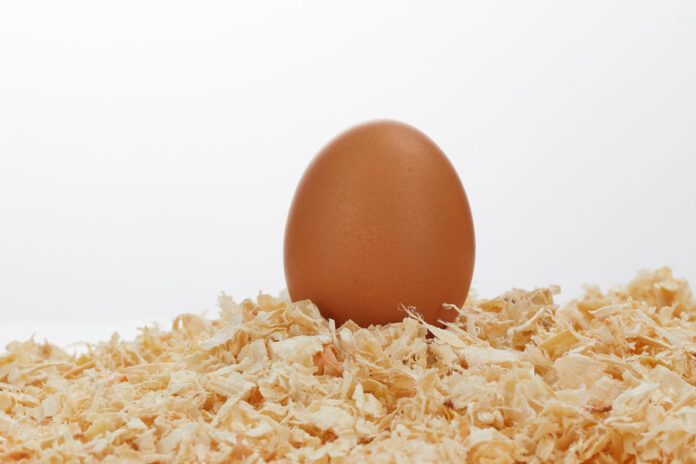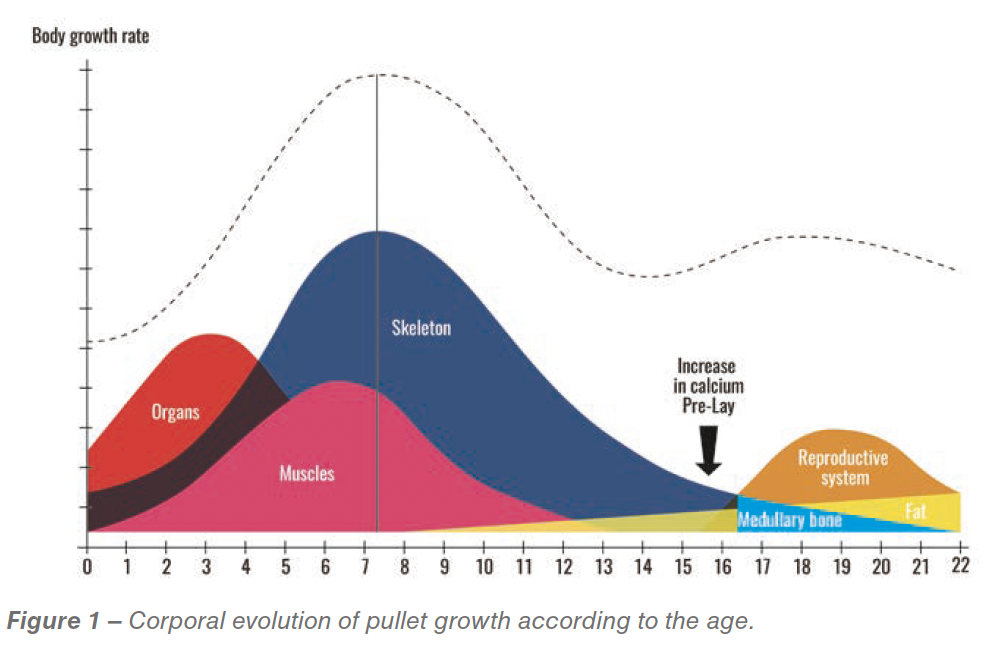
Managing egg weight is important for farmers and can greatly vary depending on market demand. Obtaining an egg size in line with market demand guarantees maximum benefit from the production.
It is important to find the right balance between market demand in terms of egg size and the best possible shell quality. The following are the factors influencing egg weight.
Influence of genetics on egg weight
The heritability of the “egg weight” criterion is fairly high compared with the other criteria, which means that it is possible to influence egg weight from one generation to the next. Genetic selection is important when it comes to increasing egg size rapidly at the start of production, in order to obtain marketable eggs as quickly as possible. This also helps in stabilising egg weight at the end of the production cycle to maximise the number of top-quality eggs.
Managing body weight during rearing is a key to manage future egg weight
Flock management from the beginning of the rearing period can have a major influence on egg weight Body weight at sexual maturity and at light stimulation will play a crucial role in the weight of future eggs.
Several studies have shown that early light stimulation induces a lower body weight at sexual maturity, and therefore a lower egg weight. Morris (1980) and Koutoulis (1997) have shown that a variation in sexual maturity of one-week results in a variation in egg weight of 1 g and in the number of eggs of approximately five (5) eggs at 74 weeks of age. The table below shows that a 100 g increment or decrement in pullet weight at sexual maturity results in a change of about 1 g of egg weight.
Influence of pullet body weight at 127 days on production performance
 In order to obtain an egg weight in line with the market demand, it is important to check the weight of the pullets on a weekly basis from Week 1. Weighing pullets at transfer, even if they reach the standard body weight does not mean that a good body weight has been achieved, as it may also mean that some hens are too fat. To obtain reliable data on body weight, the pullet’s weight should be recorded from Week 1. This will ensure that body development and growth have been satisfactory throughout the rearing period. Also, the body weight at 7 weeks of age and before is good (muscles, organs, skeleton) and this is the best time to invest to promote pullet growth. At around 8/10 weeks of age, pullets start to store excess energy in their fat reserves, mainly in the form of abdominal fat.
In order to obtain an egg weight in line with the market demand, it is important to check the weight of the pullets on a weekly basis from Week 1. Weighing pullets at transfer, even if they reach the standard body weight does not mean that a good body weight has been achieved, as it may also mean that some hens are too fat. To obtain reliable data on body weight, the pullet’s weight should be recorded from Week 1. This will ensure that body development and growth have been satisfactory throughout the rearing period. Also, the body weight at 7 weeks of age and before is good (muscles, organs, skeleton) and this is the best time to invest to promote pullet growth. At around 8/10 weeks of age, pullets start to store excess energy in their fat reserves, mainly in the form of abdominal fat.
Therefore, body weight information is vital as it facilitates flock monitoring and allows to adjust the lighting programme. Correct adjustment of the lighting programme will help obtain the desired sexual maturity while keeping in mind that it is also important to maintain growth during the start of production up to the age of 30 weeks. The lighting programme is designed so that all the hens start laying at the same time. Adjusting this timing adjusts the future weight of the eggs.
Managing egg weight with nutrition
Nutrition can have a considerable impact on egg weight. Different nutritional techniques can be applied to achieve the desired egg weight:
- Egg weight is influenced by the oil content of the feed. Oil has a clear impact (direct or indirect) on egg weight. This pertains to added fat not included in the raw materials. To reduce egg weight, reducing the amount of added oil/fat can be an option. Increasing the fat content in the diet does not seem to affect the number of eggs produced. However, egg weight increases significantly, especially at the beginning of the laying period. Oils rich in polyunsaturated fatty acids have a greater impact on egg weight increment.
- Energy levels seem to influence egg weight. According to our internal meta-analysis, an increase of 100 kcal can increase egg weight by an average of 0.85%, even if feed intake is lower. Reducing energy intake by decreasing the energy in feed could help reduce the average weight and the risk of fatty hens.
- Methionine is the amino acid that influences egg weight the most. The Methionine/Lysine ratio can be adjusted according to the expected egg weight profile. To reduce egg weight, it is necessary to reduce the amount of methionine (lower Met/Lys ratio).
- Protein levels also appear to have an impact on egg weight. Our own meta-analysis shows that an increment of 1% crude protein can increase egg weight by 1.65%. This impact is smaller than that of methionine but should not be overlooked.
- Presentation of the diet has an influence on egg weight, layers have preference for coarse particles and tends to leave the fine particles behind. Moreover, feed granulometry play a crucial role in feed consumption. Increasing the amount of fine particles in the feed can help in reducing egg weight via a reduction of the feed consumption, but it could also lead to a reduction in egg production.
- All this nutritional advice should be evaluated regularly with local nutritionist and/or feed supplier to adjust egg weights according to market demand.
Climate condition
Temperature also has an influence on egg weight: above 22-23°C, egg weight begins to decrease. Between 24 and 28°C, egg weight is reduced by 0.4% per °C; beyond 28°C, egg weight is reduced by 0.8% per °C. It is mainly influenced by a reduction of feed consumption due to the heat, impacting egg weight as well as egg production.
In hot climates, it is therefore important to have good temperature management through ventilation and feed management. High temperatures can also cause heat stress for the animals.
Conclusion
With a clear understanding of the market demand, pullet management can be adjusted to meet and define the average egg weight profile. It is always easier to increase egg weight through nutrition or management than the other way around. In fact, when the hens are too old, wanting to reduce egg weight can mean reducing production.
Finally, the continuous genetic progress made by NOVOGEN has allowed significant gains in both egg production and egg quality. It has also made it possible to have robust and resilient birds in all conditions of production. Nonetheless, in order to fulfil the layers’ genetic potential, the management and nutrition of the flock must be closely monitored, adapted to the local environment and market demands.

















